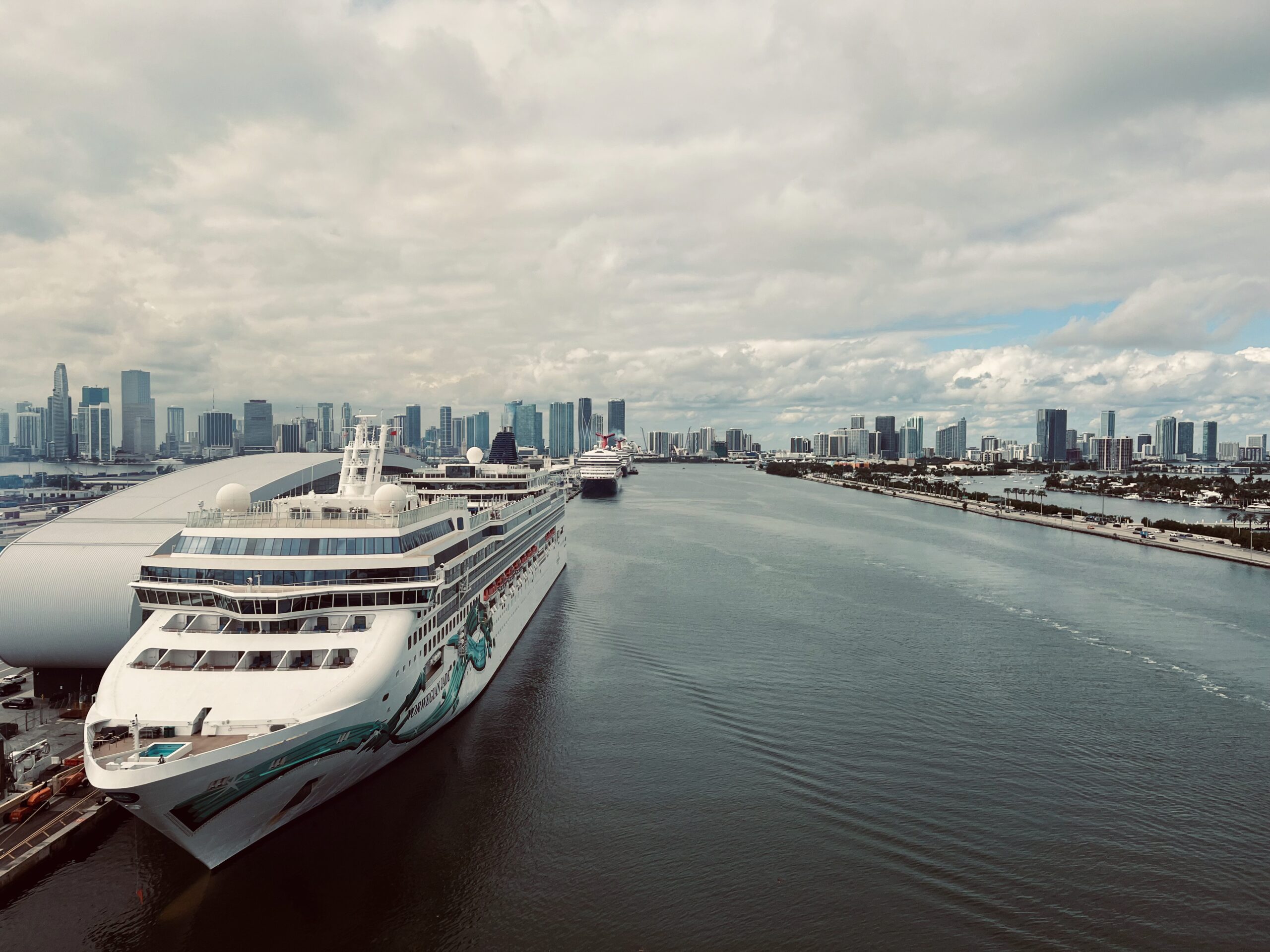
Cruises have been around since the 19th century, gradually evolving from transatlantic ocean liners into the modern cruise ships we know today. In the mid-1800s, the Peninsular & Oriental Steam Navigation Company (P&O) is often credited with launching the first pleasure cruises. While these early voyages weren’t cruises in the modern sense, they offered sightseeing opportunities aboard ships primarily used for mail and passenger transport.
By the late 1800s, the first cruise ship built specifically for tourism — the Augusta Victoria — set sail, marking a key milestone in cruise history. During the early to mid-1900s, ocean liners like the Titanic emerged, offering luxury travel across the Atlantic.
The modern cruise industry began to take shape in the 1960s. Princess Cruises launched in 1966, followed by Royal Caribbean in 1969 and Carnival Cruise Line in 1972 — ushering in the era of leisure-focused, entertainment-packed cruising.
It’s hard to imagine what those early passengers would think of today’s cruise ships — floating cities filled with entertainment, fine dining, and experiences beyond anything they could have dreamed of.
What is a Cruise?
Often defined as “A leisure voyage on a ship, usually with stops at multiple destinations, where the journey itself is part of the vacation experience.”
As a travel agent I often hear clients say, “I would never go on a cruise” with little to no knowledge of what a cruise experience is actually like. For one, there are so many different cruise experiences -however most people often think of giant cruise ship filled with water slides, children running freely and lots of drunk people. Absolutely there are cruise lines that offer those experiences (and i’ve been on them!), but there are so many other options that many people overlook when they immediately dismiss a cruise as a potential vacation. For example, there are river cruises and there are ocean cruises. These experiences are very different with totally different clientele. Notice some key differences below.
Ocean Cruises
- Large ships (2,000–6,000+ passengers)
- Often include islands, coastal cities, and sea days
- Caribbean, Mediterranean, Alaska, etc.
- Resort-style: pools, theaters, casinos, multiple restaurants
- Full-scale productions, nightlife, water parks, etc.
- More potential for rough seas
- Families, couples, groups of all ages
River Cruises
- Small ships (100–250 passengers)
- Focus on inland towns, cities, and cultural hubs
- Danube, Rhine, Seine, Nile, Mekong, etc.
- More intimate: fine dining, lectures, relaxed social areas
- Cultural talks, live music, cooking demos; lower-key
- Very smooth sailing; minimal motion
- Often geared toward adults, history/culture-focused travelers
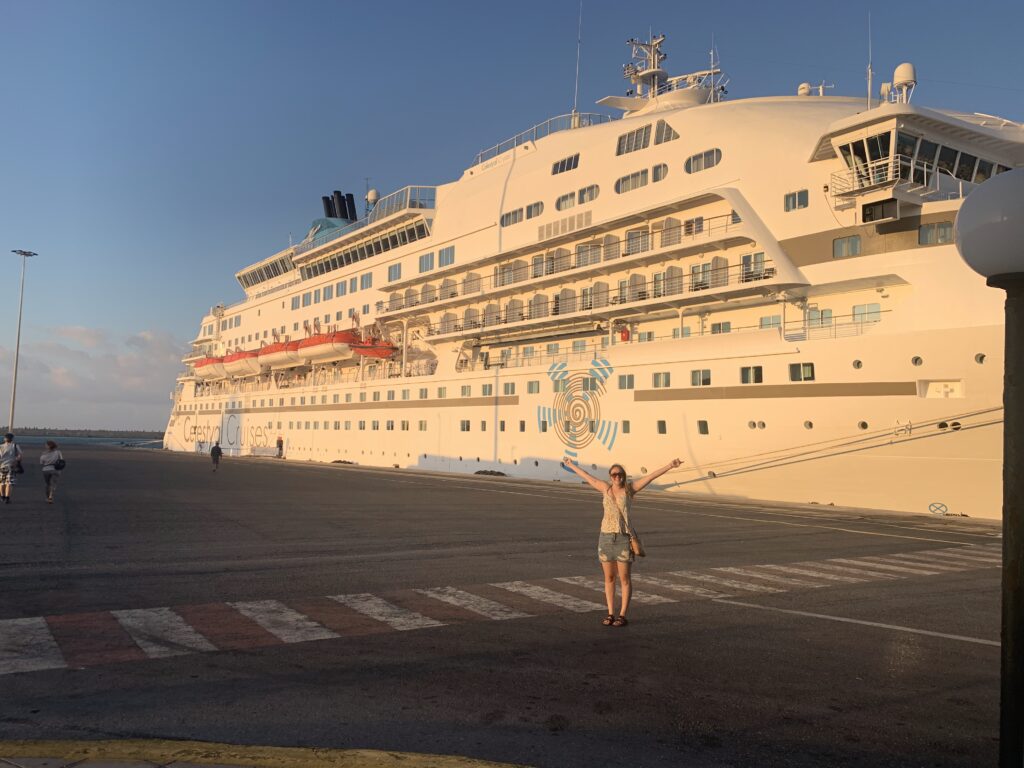
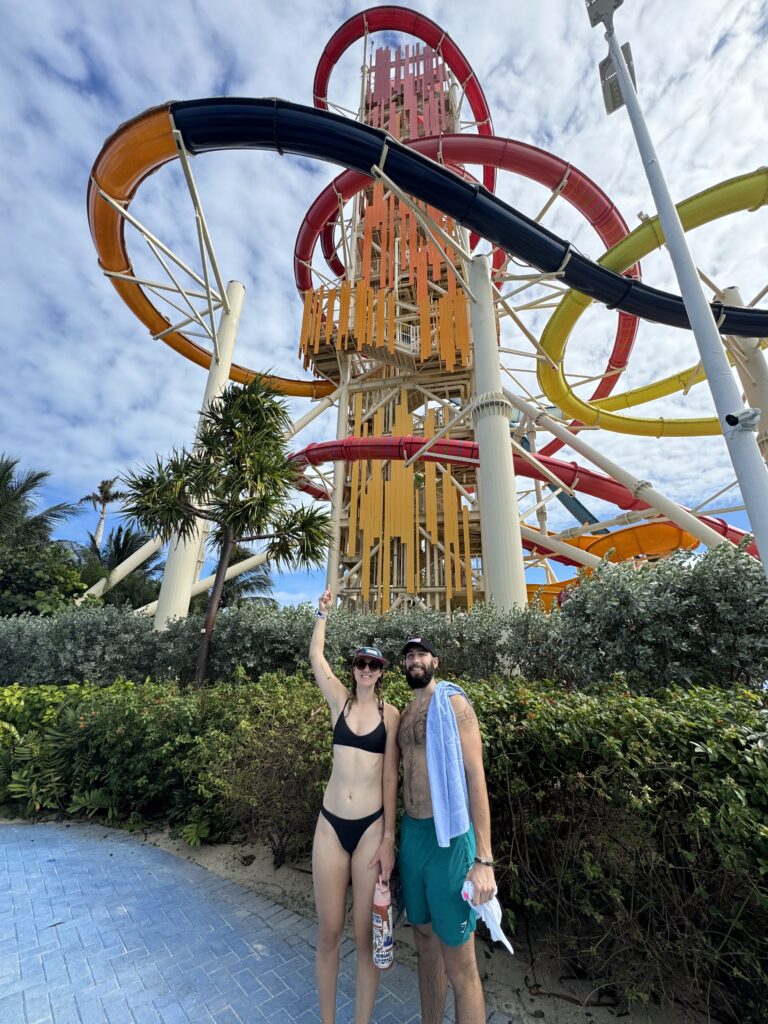
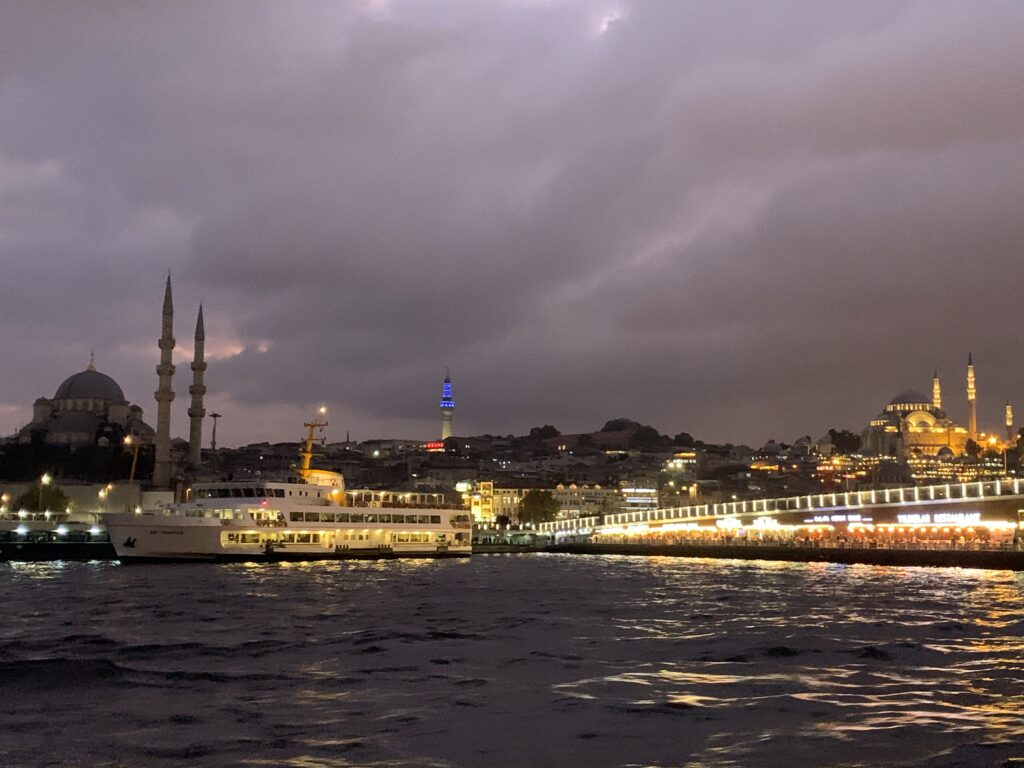
Booking a Cruise:
The first thing you should do before you book a cruise is contact your travel agent {shameless plug} but it’s true! It costs exactly the same price to book with a travel agent than it does to book it online so there’s really no reason to not. With more options than ever it’s important to choose the right cruise for you – especially if you are a first time cruiser! If I am being honest, cruises can be a complicated and confusing process for many people.
Cruiselines offer early booking incentives and often let you book out years in advance – which is not generally something hotels or all-inclusives do. Majority of cruiselines will let you put down a deposit to secure your booking and take final payment anywhere from 60-90 days prior to your sailing. The deposit amount can range anywhere from $50 – $1,000 per person (depending on the type of cruise you are taking). Some have options to book a refundable deposit or non-refundable deposit – speak with your travel agent to help decide which option makes the most sense for you.
Cruise Add-Ons:
Ocean cruise fares can be surprisingly affordable — sometimes as low as $300 per person for a 3–4 night cruise with lines like Norwegian, Royal Caribbean, or Carnival.
At that base price, your fare typically includes:
- Your cabin (based on the category you choose)
- Port taxes and fees
- Access to the main dining room and buffet
- Basic beverages like water, coffee, and some juice at meals
However, many other amenities are not included and come at an additional cost:
- Drink packages (for soda or alcohol) must be purchased separately.
- Specialty dining — like Italian, hibachi, or sushi restaurants — often costs extra and is not included in the standard dining options.
- Shore excursions are also not part of the base fare and need to be booked separately.
- Wi-Fi/internet access is usually an added cost.
- Travel Insurance – not required but highly recommended
- Gratuities (tips) are not included in most base fares but are required. It’s a good idea to pre-pay them when you book to avoid surprises later.
- Pre & Post night stays in hotels near cruise port
- Transportation to the Cruise Port
- Flights to the Cruise Port
Even without any add-ons, you’ll still enjoy dinner in the main dining room each night, buffet access for breakfast and lunch, and basic non-alcoholic beverages — making it a great value for a budget-friendly escape. That said, amenities can vary quite a bit between cruise lines, so consider this a general overview and be sure to check the details when booking your cruise getaway. River Cruises and more luxurious ocean cruiselines generally offer more “included amenities” such as alcohol, wifi, dining and airport transfers as these cruise fares are generally higher and geared towards more experienced high end clients.
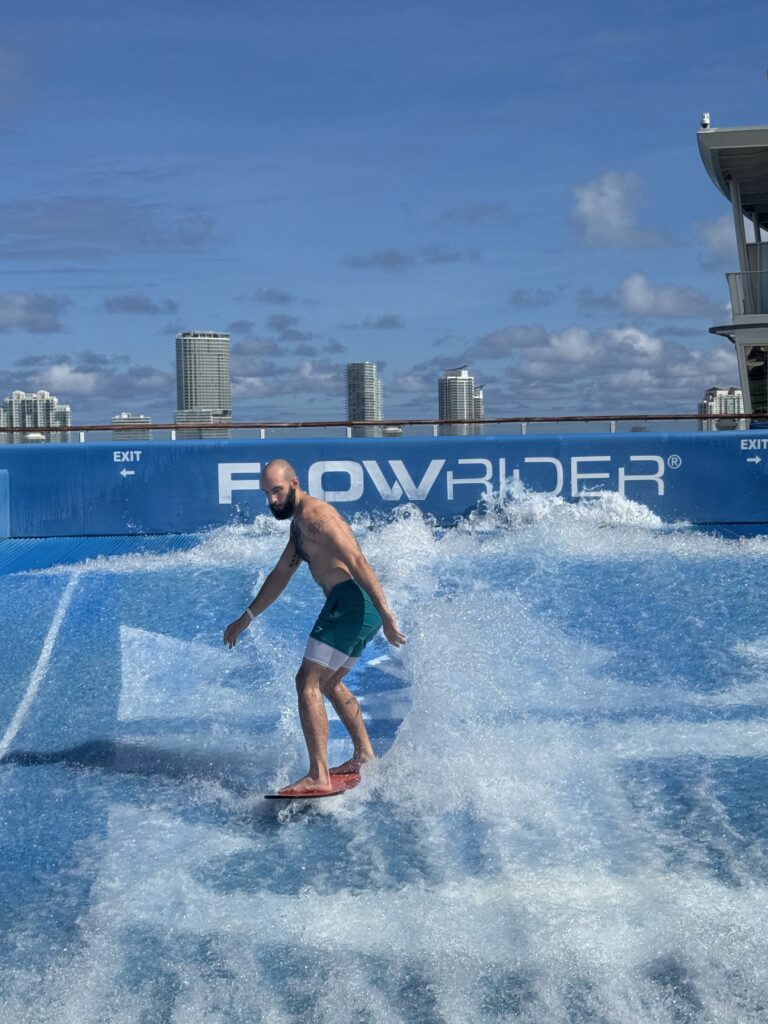
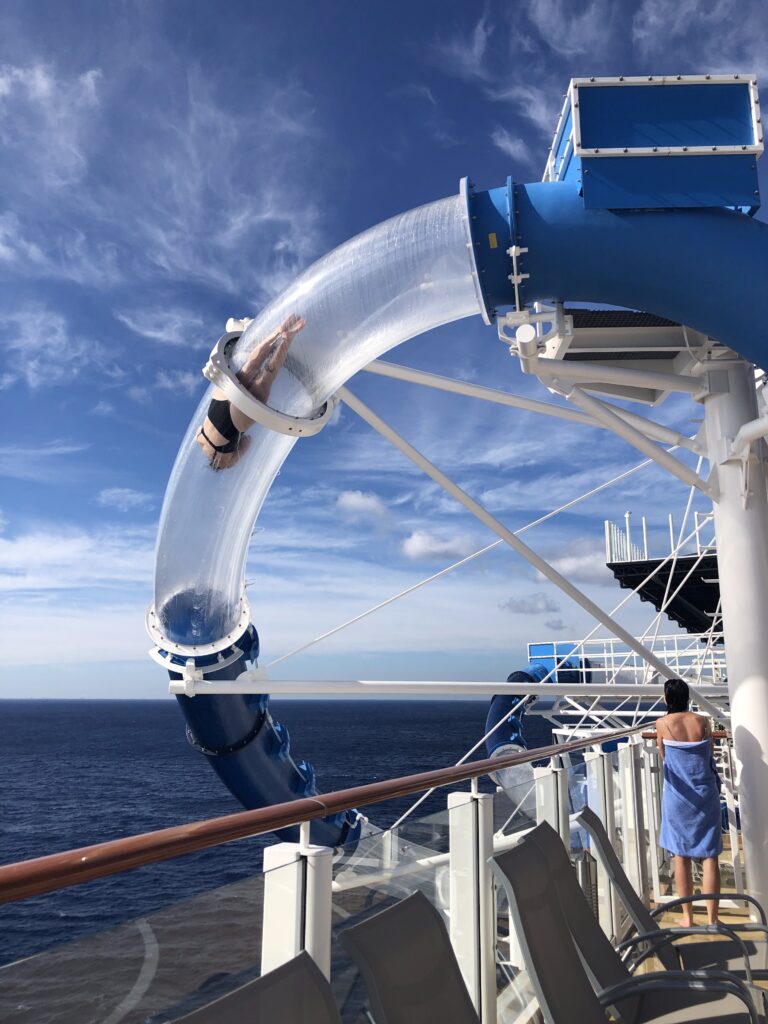
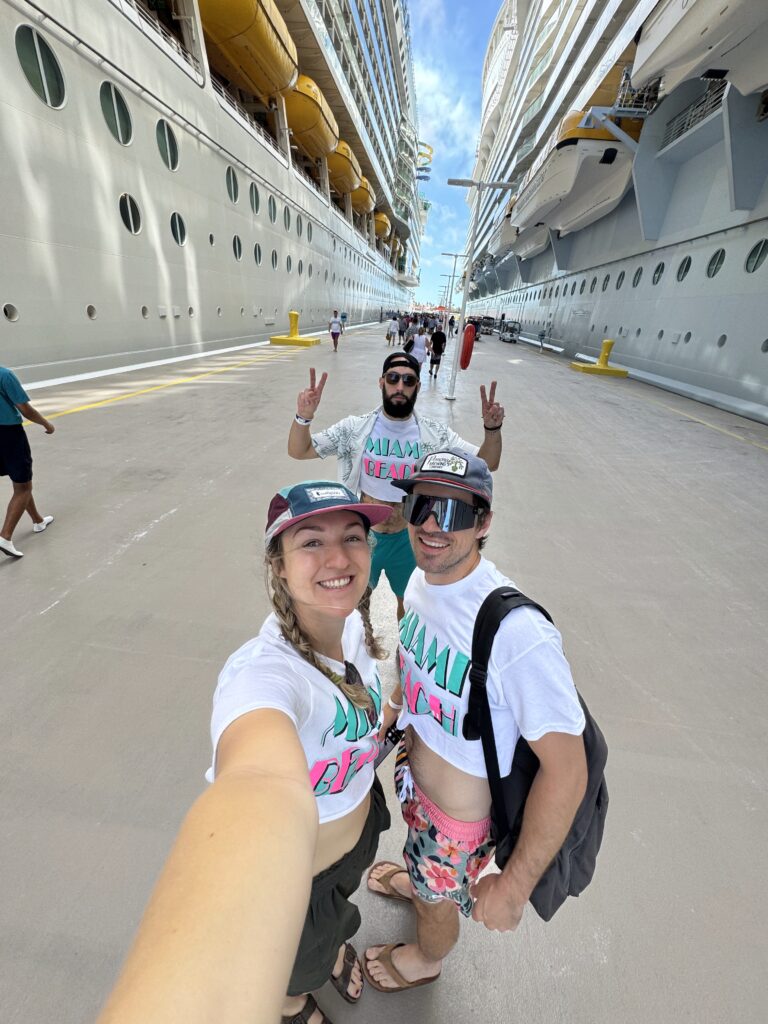
On a Cruise Ship:
Everything is booked and paid for and now all that’s left is actually going on your cruise! The Cruise Check-In Process is very similar to going through an airport. There are people collecting your bigger checked bags, checking your travel documents (passports) and sending you through security. This process used to be a nightmare in my experience – but the last few times I have cruised they have really streamlined this process and it’s been smooth sailing! Once you get through security you will enter the cruise ship – similar to a hotel or all-inclusive your big checked bag generally won’t get to your room until the afternoon and your room will not generally be ready until the afternoon. At this time you are free to explore the cruise ship – grab a drink and some food and relax -you made it! On almost all cruise ships there will be some sort of safety briefing that you may need to complete so be prepared for that. For bigger cruise ships – every passenger has a zone on the cruise ship that they are assigned to report to in case of an emergency and mostly you will report to this location and they will check that you completed that process – sometimes listen to the safety briefing and then you are free to go! Yes this process is required – and if you try to skip it they will not leave port. Don’t be that person – do your safety check.
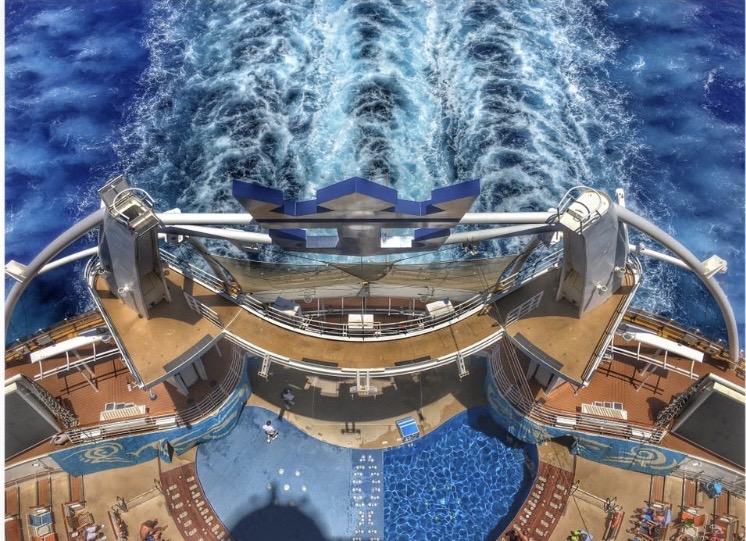
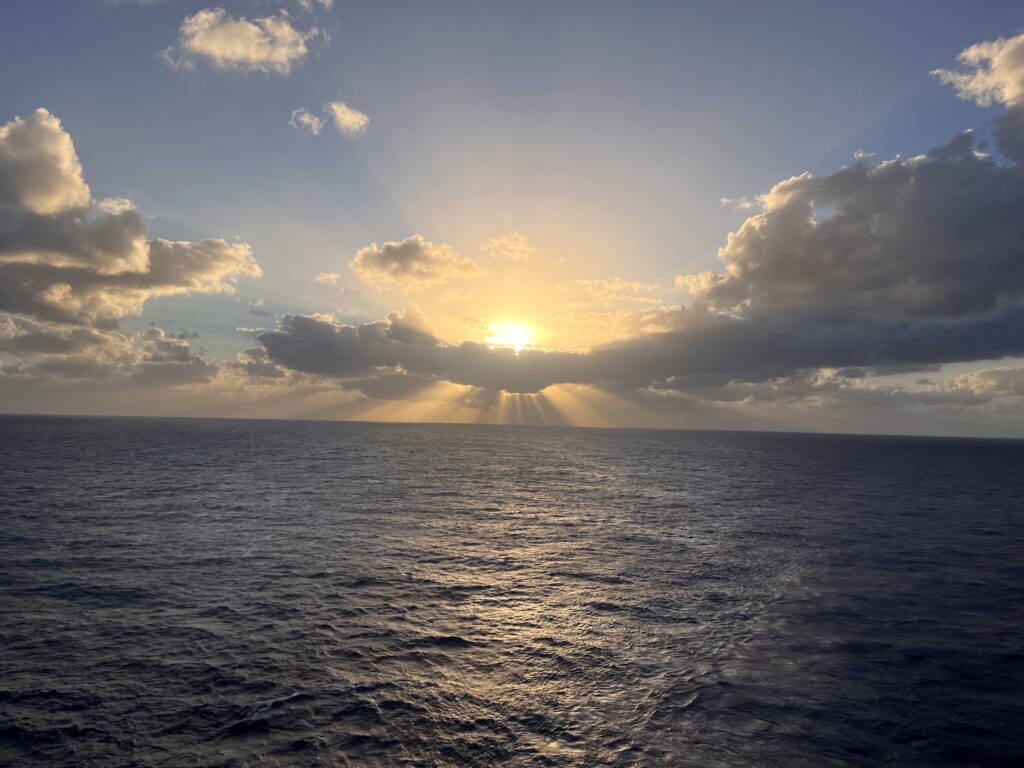
Explore the cruise ship – my favorite part of getting on a cruise ship is walking around and exploring everything. It helps me get aquatinted with where everything is and also is just nice to walk around. Navy talk you should know.. port and starboard. Port refers to the left side of the ship when facing forward. Starboard refers to the right side of the ship when facing forward. This will help you know which side your room is on and generally just help you navigate the ship. Once you get into your room you’ll likely notice the rooms are very small. If this bothers you – it might be worth it to upgrade your cabin.
Itineraries: Somewhere you’ll be able to access the activities/shows/entertainment for each day so you see what’s going on and plan your day accordingly. On ocean cruises there are things called – sea days – where you are cruising at sea all day and making no stops at any destinations. River cruises usually don’t have any sea days as the focus is set on the destination and not the ship – so most entertainment will occur in the evening once all the passengers are back on the boat. Activities can include lectures, bingo, belly flop contest, sushi making class etc. There will be a wide array of entertainment if you are sailing on a large ocean cruise!
Eating/Drinking: Buffets, restaurants and bars will be in plenty on cruise ships. You never have to venture far to find food or drink. Included options usually include the breakfast/lunch buffets and exclude the nicer options like sushi or habachi. Dinner is generally held in a dining hall each evening – that is an included service and honestly one of my favorite parts about cruising! The menu changes each evening and you have a set dining time with the same waiter/waitress. If you aren’t feeling the dining hall- don’t go- it’s not required you go each evening so if you feel like switching it up and going to a speciality restaurant you can – just make sure you make a reservation! The buffet is also open for dinner if you just want something small and quick.
Excursions: Lastly shore excursions are a big part of why cruises are so popular! Since the cruise ship is your transportation you get to travel to many places in one trip – all while only unpacking once! You will have the cruise itinerary and stops ahead of time when you are booking the cruise so you’ll be able to start planning what you are going to do at each spot – if you choose to get off the ship that is! Most ports will have a departure time which means you need to be back on the cruise ship – otherwise you WILL get left behind. The good news is when you book an excursion through the cruise company they guaranty they will not leave you behind if your tour is running late. IF you book someone on your own OR you just get off the boat and wander around and don’t make it back in time.. bye! For this reason.. I recommend booking any shore excursions with your cruise line directly. There is often a lot of signage and announcements reminding you of what time you need to be back on the ship so you’ll be well aware of each port and it’s departure time. Food and drink once you are off the ship is on your own – so be sure to bring cash/card (unless you are at one of the cruiselines private islands (like Perfect Day at Coco-Cay or Great Stirrup Cay) where your food and drink package transfer to the island).

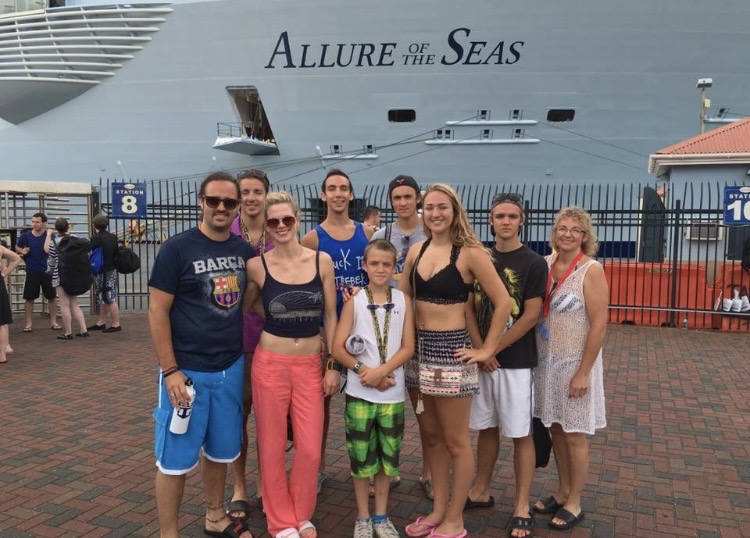
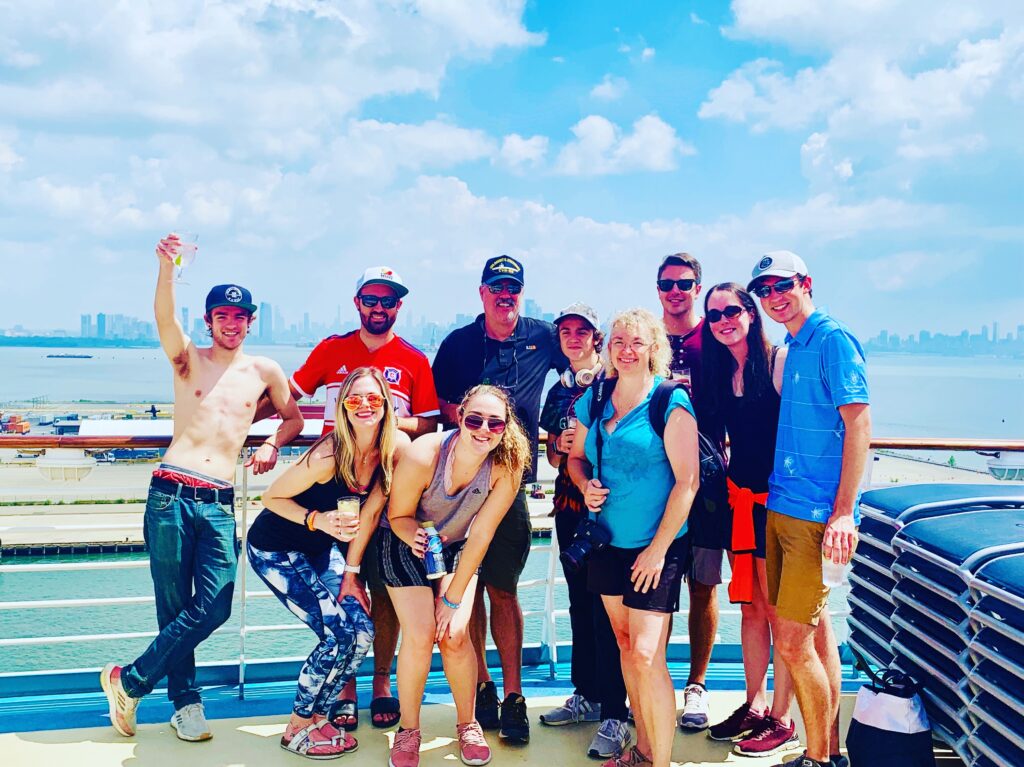
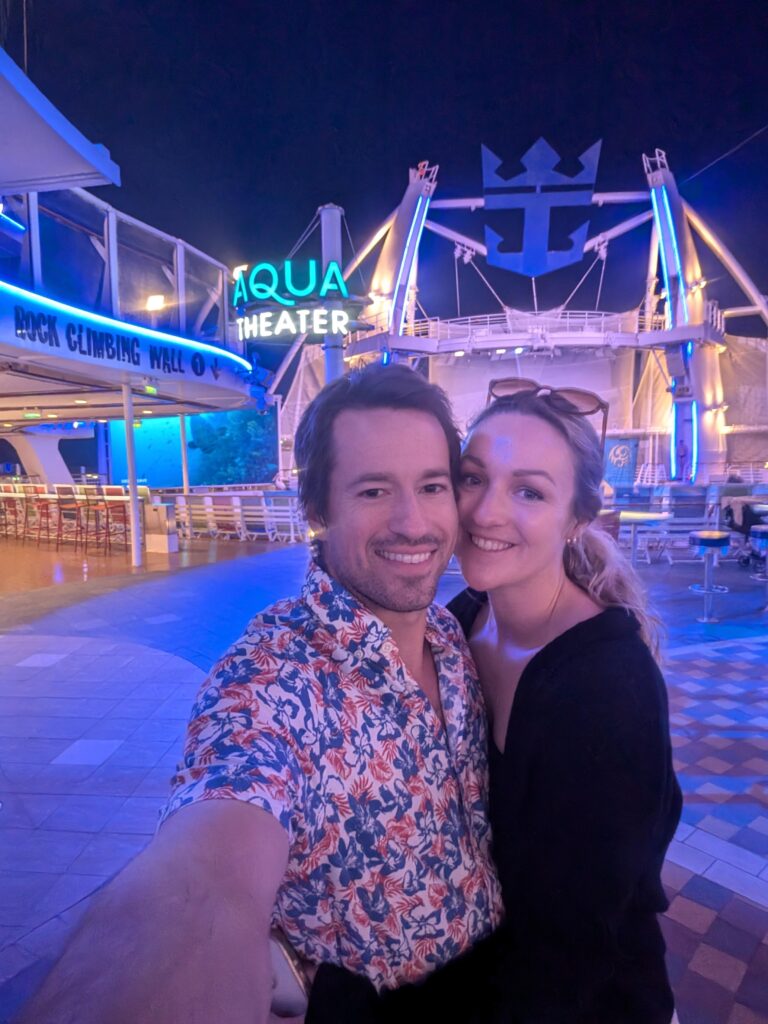
CruiseCard: Most Cruises will have some sort of identification card or band for you for the duration of your trip. This is usually your room key, and also used to identify you and track your purchases (if any) while on the ship. With big cruise ships you can hook up your credit card to your card prior to the trip so when you are exploring on the ship you just need your cruise card and don’t have to worry about carrying cash or a credit card. At the end of the cruise you are able to view all your charges and make your payment. Some people will buy a lanyard and punch their card so they can carry it by lanyard – so that’s an option if you think you may lose your card! This card is also how you will get on and off the ship – so you aren’t going to want to mess around and find out!
Common Questions About Cruises:
🛳️ Do you need a passport to go on a cruise?
It depends on your cruise itinerary and the cruise line.
If your cruise departs from and returns to the same U.S. port, it is considered a “closed-loop” cruise. For U.S. citizens, these typically do not require a passport. Instead, you’ll need:
- A valid government-issued photo ID (like a driver’s license), and
- Proof of citizenship (a certified birth certificate or a passport)
✅ My recommendation: Even if it’s not required, bringing a valid U.S. passport is strongly advised in case of emergencies or unexpected changes to your itinerary.
✈️ Should I fly in a day early before my cruise?
Yes — absolutely!
Flights can be delayed or canceled, and you don’t want to risk missing your cruise departure. Booking a hotel the night before your cruise offers peace of mind and helps you start your vacation stress-free.
🚐 How do I get from the airport or hotel to the cruise port?
Most cruise lines offer optional transfer services that you can add during the booking process. You can also:
- Book a transfer with an outside company
- Take a taxi, Uber, or Lyft
These transportation costs are not included in your cruise fare and should be budgeted separately.
👗 Is there a dress code on cruises?
Yes — most cruises have “formal nights” and may have specific dress expectations for certain dining venues.
Dress codes vary by cruise line, so it’s best to check with your travel advisor or directly with the cruise line before you sail.
🍽️ Do I need reservations for dining or entertainment?
That depends on your ship.
- Some shows and entertainment venues require reservations, especially if space is limited.
- Specialty restaurants almost always require a reservation.
Most cruise lines have an app where you can view the daily schedule and make reservations in advance or once on board.
🌊 Will I get seasick?
It depends on the person. I personally experience vertigo from time to time, but haven’t had major issues on cruise ships. You can definitely feel the motion — especially at night — but it’s usually manageable.
If you’re prone to motion sickness, it’s smart to come prepared with medication just in case. You know your body best!
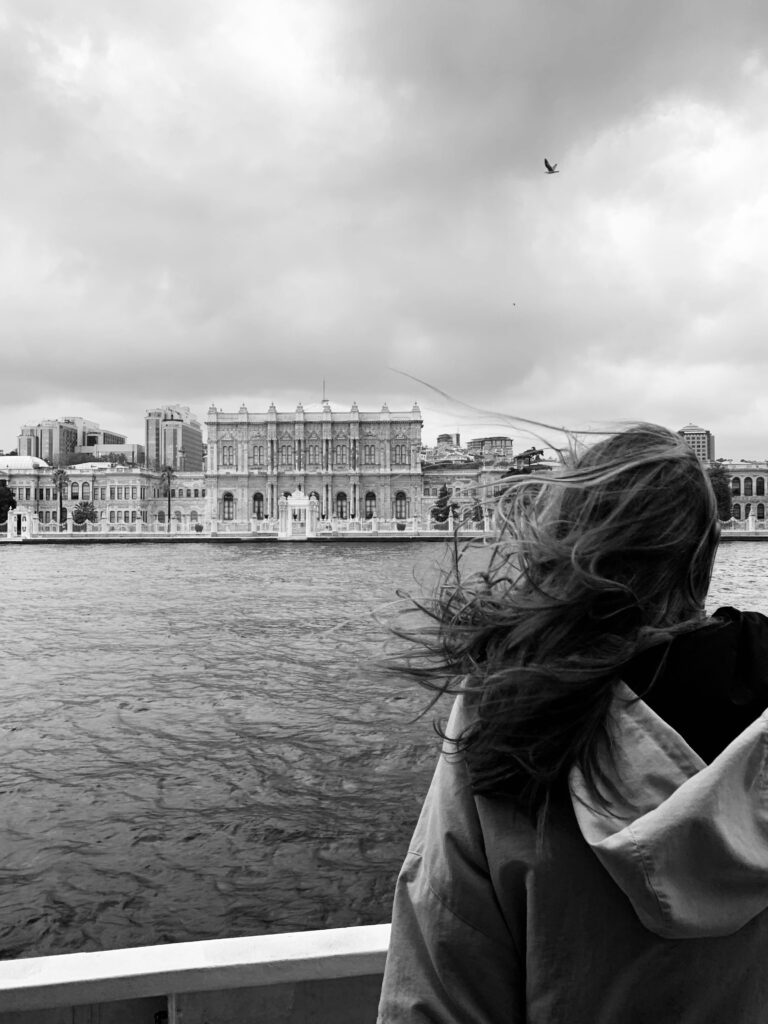
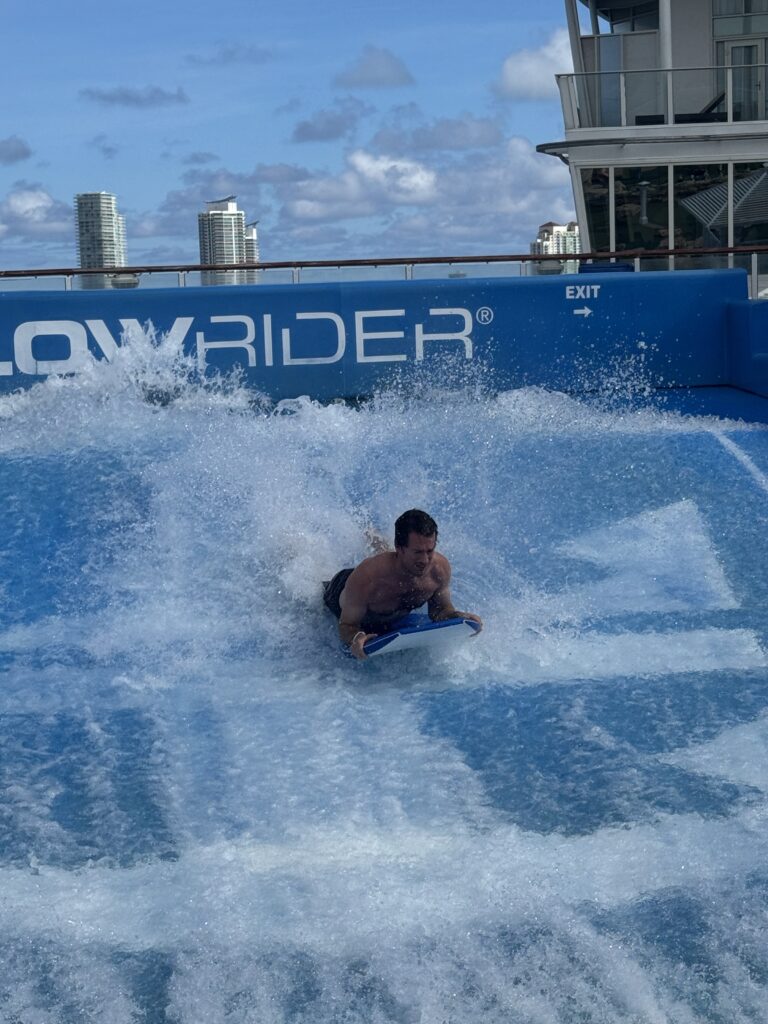
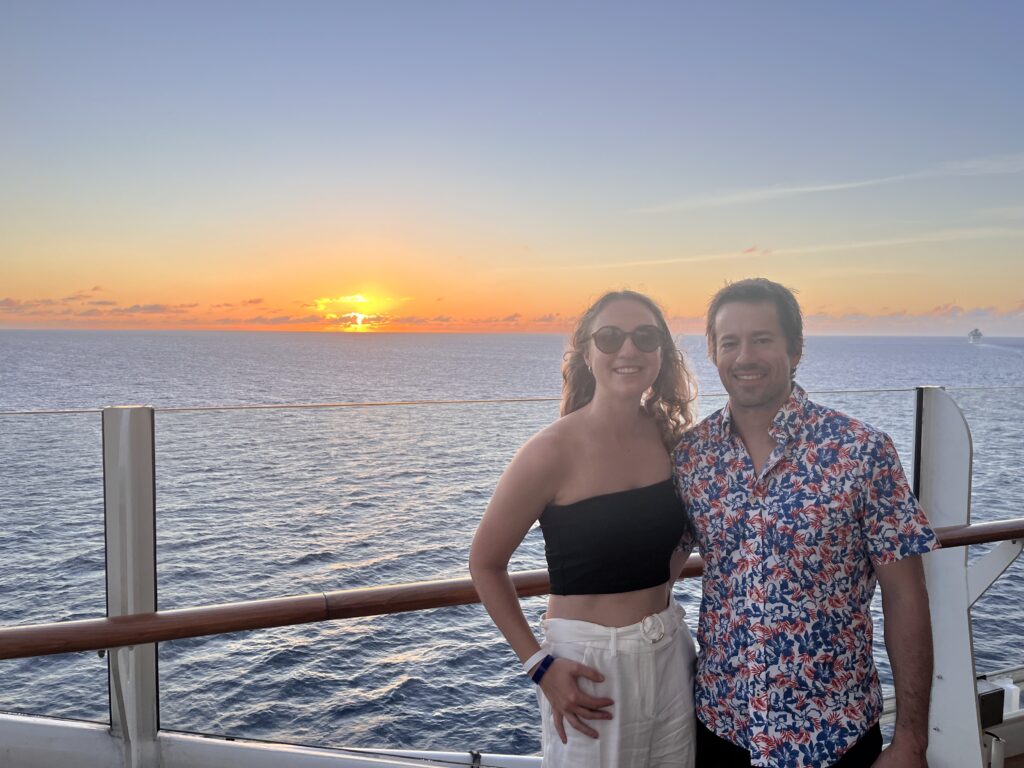
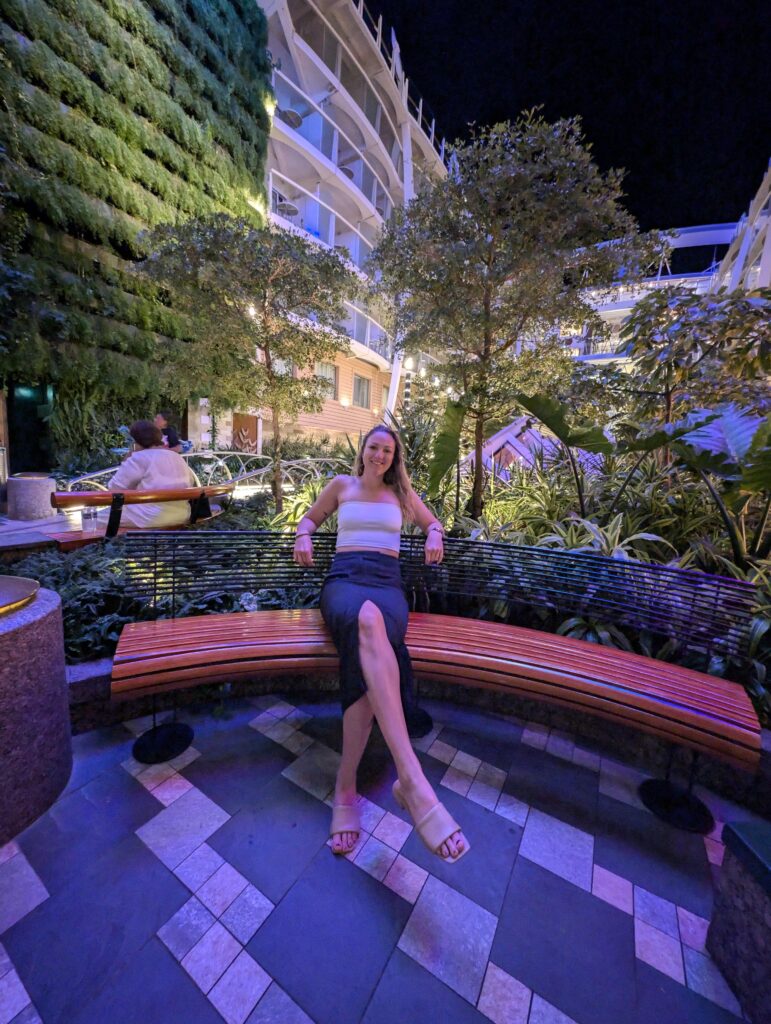
Thinking of your next Cruise adventure? Don’t wait – contact me today to help piece your adventure together and seize the day! Follow me on Instagram:
@ Highdeserthorizons

Leave a Reply